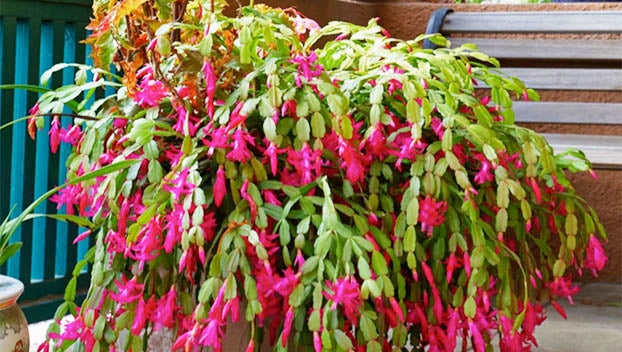MASTER GARDENER — Holiday Cacti tips for Thanksgiving, Christmas and Easter (Part 2 of 3)
Published 12:47 pm Friday, November 25, 2022

- Christmas cacti are often mistaken for Thanksgiving cactus. (Image courtesy homesandgardens.com)
|
Getting your Trinity Audio player ready...
|
Hey gardeners, more than likely a few, if not many, of you are enjoying our colder, winter-like weather conditions! Okay, now before you start shaking your head from side-to-side, simply know it feels like winter to me.
Anyway, daytime temperatures have shifted dramatically downward from our typical moderate weather conditions. Obviously, you’ve guessed my personal weather preference leans toward warmer, balmy days and if possible, curtailing the number of cold, dreary days that is our forecasted outlook.
Such is life. While I’m not one to complain (too often), I must admit the cooler outside conditions have made performing some gardening chores, especially the physically demanding, and strenuous gardening tasks, more enjoyable.
Corralling fallen leaves, gathering downed tree limbs, or even bagging composted manure, seem a bit more pleasant or rather as pleasant as is possible, all due to the cooler weather.
Let’s dig into this week’s second installment in the three-part series and discuss Christmas cactus.
Christmas Cactus (Schlumbergera Bridgesii)
Incredibly, Christmas cacti very much look like Thanksgiving cacti; in fact, they are often mistaken for one another, but there are a few notable differences.
Some of the differences include stems, leaf shape and blooming period. The Christmas cactus has very flat stems with broad leaves, which have rounded indentations.
The leaves are also segmented, but they look completely different when you closely inspect the foliage.
Typically, blooms are red and white, but yellow and white are becoming common as well. For optimal growth, the plant needs ambient temperature to be around 68 degrees Fahrenheit with lots of bright light with indirect sunlight being best.
The plant’s soil should be kept moist, but do not overwater the plant-water the plant when the top of the soil feels dry to the touch. Make certain the soil drains well, since these plants do not appreciate sitting in water, in other words “wet feet.”
The plants are tropical, misting the leaves daily will provide them with elevated humidity, which they enjoy. A Christmas cactus is meant to bloom at or near the Christmas holiday.
To ensure that this occurs, forcing the plant into a dormant state may be necessary, meaning the plant will need 12 hours of darkness daily, less water, and ambient temperature reduction to 55 degrees Fahrenheit.
The dormant period should be started at the beginning of October, lasting for 5 to 6 weeks. If completed correctly, you will be generously rewarded with magnificent, beautiful blooms for Christmas, which will last for about eight weeks.
Thanksgiving is my favorite holiday, as it commemorates harvest and the abundant blessings we receive throughout the year. The harvest celebration began more than 400 years ago with two groups-the Pilgrims of Plymouth and the Wampanoag people.
I’m humble and thankful for the numerous blessings received in my life. I’m further thankful for each of you and I hope each of you had a wonderful Thanksgiving holiday and that you gave thanks, sharing the day with family and friends.
Next week, installment 3 of the series, we will continue the discussion with the Easter cactus, growing tips for each type cacti and the differences between them. Happy Thanksgiving to blessings each of you!
John Green is a Certified Texas Master Gardener. If you have gardening questions or need more information, contact the Orange County Master Gardeners Helpline at 409-882-7010 or visit txmg.org/orange, Orange County Texas Master Gardeners Association on Facebook or email extension@co.orange.tx.us.





